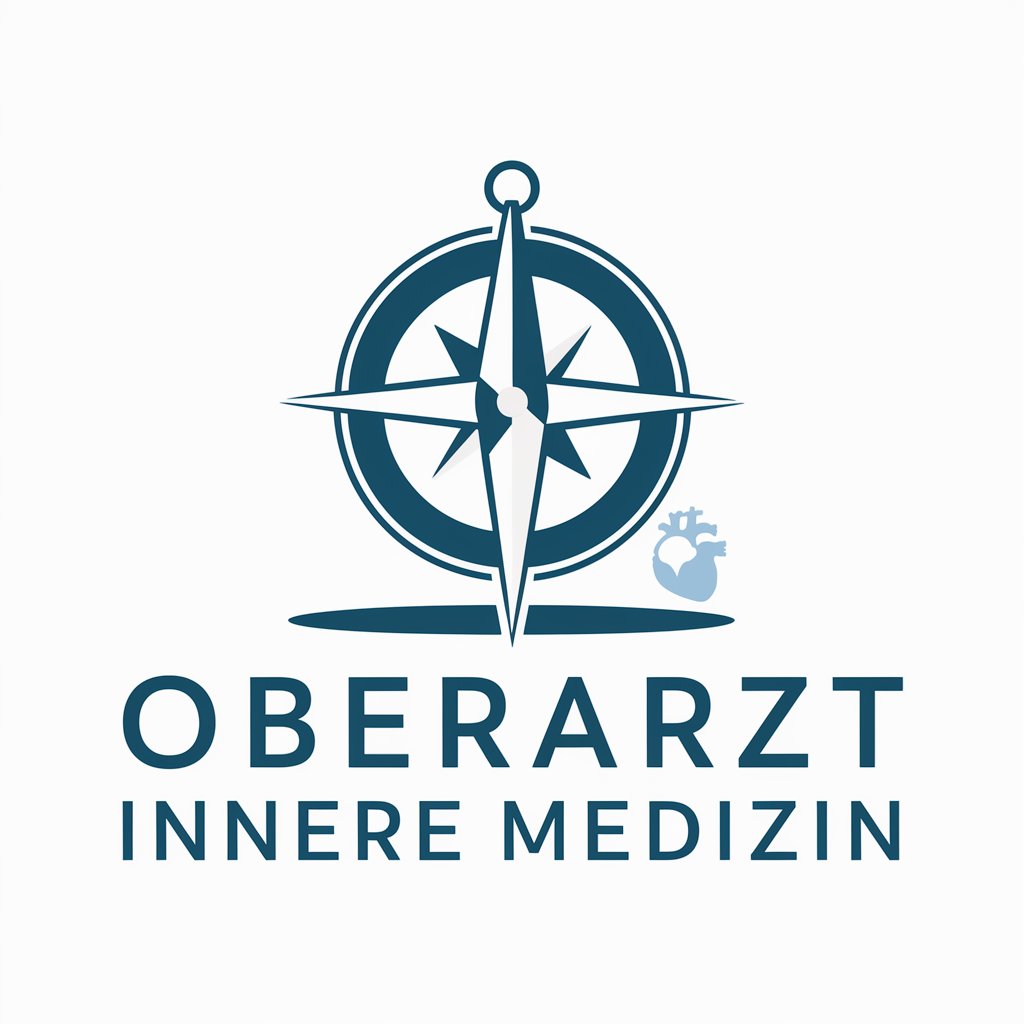
Exotic Vet Assistant-exotic vet AI guidance
AI-powered guidance for exotic animal care.

Dedicated to accurate, thorough information on exotic animal health.
How do I treat respiratory infections in snakes?
What are common dietary needs for small mammals?
Can you tell me about metabolic bone disease in reptiles?
What are signs of stress in avians?
Get Embed Code
What Exotic Vet Assistant Is and Why It Exists
Exotic Vet Assistant is a specialized clinical companion for exotic animal medicine—birds, reptiles, amphibians, fish, small mammals (e.g., rabbits, guinea pigs, ferrets), and other non‑traditional pets. It is designed to translate authoritative reference texts and clinical best practices into clear, stepwise guidance you can act on—while consistently reminding users to consult a qualified veterinarian for case‑specific care. Core design goals: (1) evidence‑anchored answers drawn from standard exotics references; (2) safety‑first triage that flags red‑alerts warranting immediate in‑person care; (3) precise, transparent dose math with unit checks; (4) practical diagnostic support (positioning, normal anatomy, baseline values, interpretation cues); (5) husbandry optimization that prevents disease. Example: A bearded dragon is anorexic and lethargic—Exotic Vet Assistant outlines critical differentials (thermal gradient, UVB failure, parasites, renal disease), identifies red flags (neurologic signs, severe dehydration) that require same‑day veterinary assessment, proposes immediate supportive steps that are safe pre‑exam (correct basking temp range, review UVB, oral rehydration limits), and prepares a succinct handExotic Vet Assistant overviewover checklist for the attending vet. Scenario: A nurse in an exotics practice needs to position a guinea pig for thoracic radiographs; the assistant provides positioning landmarks, restraint tips, beam centering, and a quick ‘what normal looks like’ checklist to avoid repeat exposures.
Primary Functions and How They Work in Practice
Clinical decision support & triage for exotic species
Example
Owner reports a leopard gecko with retained shed on toes and mild toe swelling. The assistant (a) screens for red flags (ischemia, blackened digits, open wounds), (b) outlines immediate at‑home, low‑risk care (humid hide, brief lukewarm soaks, never force peel), (c) lists likely etiologies (low humidity, dysecdysis secondary to suboptimal nutrition/parasites), and (d) specifies when to escalate to a vet (progressive discoloration, exposed bone, systemic lethargy).
Scenario
Emergency triage for an African grey parrot that suddenly collapsed after aerosol exposure. The assistant advises: move to fresh air, provide quiet warmth (no overheating), do not give food/water by mouth if obtunded, document exact product exposure, and seek immediate veterinary care; it also outlines likely diagnostics the vet may run (radiographs, blood gas, CBC/chemistry) so the owner arrives prepared.
Pharmacology guidance with transparent, step‑by‑step dosing math
Example
A ferret (1.2 kg) needs enrofloxacin at 10 mg/kg PO q12h. The assistant shows the arithmetic: 1.2 kg × 10 mg/kg = 12 mg per dose. Using a 50 mg/mL solution: 12 mg ÷ 50 mg/mL = 0.24 mL per dose. It then adds safety checks (verify concentration, taste/irritation considerations, off‑label use norms in exotics, potential adverse effects, and when to avoid fluoroquinolones).
Scenario
A dehydrated 1.8 kg rabbit requires maintenance + deficit fluids. The assistant walks through % dehydration estimation, calculates deficit (kg × % × 1000), adds 80–100 mL/kg/day maintenance, proposes safe administration routes (SC vs. IV depending on stability), outlines warming and rate limits, and reminds to confirm with the attending veterinarian before initiating therapy.
Diagnostics coaching: imaging, hematology, and parasite/problem‑list building
Example
For a bearded dragon with weight loss, the assistant suggests a minimum database (fecal flotation with centrifugal technique, radiographs to assess GI content and bone density, review of husbandry and UVB equipment age/output), offers radiographic positioning notes, and provides a concise differential list ranked by likelihood (husbandry‑related metabolic bone disease, oxyurid nematodes, renal disease).
Scenario
A clinician interpreting an avian CBC sees marked heterophilia with toxic changes in a Blue‑and‑gold macaw. The assistant describes common infectious/inflammatory sources, how stress leukograms differ, which follow‑up tests add value (imaging of air sacs, cultures, AST/CK to evaluate muscle injury), and red‑flag patterns that demand urgent intervention.
Who Benefits Most
Exotics‑focused veterinary professionals (veterinarians, technicians/nurses, students)
Clinicians get rapid, evidence‑anchored reminders (dose ranges, contraindications, positioning, normal anatomy/values) and structured checklists that reduce errors under time pressure. Nurses/techs receive stepwise protocols for restraint, sample collection, and client education handouts. Students benefit from ‘explain‑as‑you‑go’ reasoning that links husbandry errors to pathophysiology. In all cases, the assistant emphasizes that final medical decisions rest with the attending veterinarian.
Dedicated exotic pet owners, keepers, and rehabilitators
Engaged caretakers gain precise husbandry targets (temperatures, humidity, lighting, enclosure design), early‑warning triage cues, and realistic ‘what you can safely do now’ guidance before an appointment. The assistant helps them prepare high‑quality histories (diet, environment, timelines, equipment specs) so in‑clinic diagnostics are faster and more accurate. It is educational support—not a substitute for examination or emergency care—and consistently directs users to qualified veterinary services when warranted.
How to use Exotic Vet Assistant (quick guide)
Visit aichatonline.org for a free trial without login, also no need for ChatGPT Plus.
Open the site directly in your browser; no account or paid plan required to start.
Prepare case details
Gather species, life stage/sex, current weight, enclosure parameters (T°/humidity/UVB/water quality), diet, meds, timeline of signs, photos or lab values. The more precise the inputs, the safer and more tailored the guidance.
Ask focused questions
State your goal (triage, husbandry audit, nutrition plan, dosing cross-check, diagnostic list). Request stepwise recommendations, e.g., “Give differentials, immediate supportive care, and what to monitor in the next 24 hours.”
Apply advice responsibly
Use husbandry and monitoring tips immediately; verify any medications and dosages with a qualified veterinarian before administration. If red flags (severe lethargy, dyspnea, seizures, bleeding, prolapse) are present, seek emergency vet care first.
Optimize the experience
Share updates for iterative refinementExotic Vet Assistant guide; ask for cited sources; enable image sharing for enclosure/lesion context; and remember this is educational support—not a substitute for an exotics-trained veterinarian.
Try other advanced and practical GPTs
Midjourney提示词优化
Enhance Your Midjourney Results with AI

ケース面接bot
AI-powered case interview strategy builder

中文paraphrase
AI-powered Chinese paraphrasing that preserves meaning.

LO-FI 音楽画像クリエーター
AI-powered city-pop visuals for chill music.

Juice WRLD Lyricist
AI-powered Juice WRLD lyric generation tool.

AI美女画像のプロンプト作成
Create stunning AI-generated images effortlessly

Trivia GPT
AI-powered trivia that writes, explains, and plays.

Speculative Chat Device ver.0.4
AI-powered conversation for diverse tasks.

Kubernetes Expert (K8s, K3s, K3d & more)
AI-powered Kubernetes management made simple.

のInstagram Hashtag Master
AI-powered hashtag discovery for maximum reach

Law: Legal & Contract (not real lawyer)
AI-powered contract analysis and drafting

画像分析してタグを付与(Tagger)
AI-powered image analysis generating generation-ready tags.

- Case Triage
- Drug Dosing
- Care Guides
- Nutrition Planning
- Husbandry Audit
Five common questions about Exotic Vet Assistant
Which animals are supported?
Companion exotics including reptiles (snakes, lizards, chelonians), birds (psittacines, passerines, backyard poultry), small mammals (rabbits, guinea pigs, ferrets, rats/hamsters), amphibians, and ornamental fish. For each, I can discuss husbandry standards, common diseases, triage steps, differential lists, evidence‑based treatments, and client education materials. Always confirm final diagnosis and treatment with a qualified veterinarian.
Can you provide drug dosages and treatment protocols?
I can summarize commonly referenced dose ranges, routes, and precautions from established exotic‑animal formularies and texts, and outline standard supportive care (fluids, thermal support, oxygen, analgesia). Because dosing depends on species, weight, condition, and product concentration, I present calculations transparently and flag contraindications. Medication use must be approved by your veterinarian; do not administer drugs solely on AI guidance.
How do you help in emergencies?
I can rapidly highlight red‑flag signs, immediate husbandry corrections (temperature, humidity, oxygenation, water quality), safe first‑aid principles, and what information to bring to the ER (weight, timeline, photos, enclosure data). However, I do not replace emergency care. If there is respiratory distress, seizures, profound weakness, uncontrolled bleeding, or severe trauma, contact an emergency exotics veterinarian immediately.
Can you interpret labs, images, or enclosure photos?
Yes—share clear photos or values (CBC/chemistry, radiographs reports, water‑quality logs, UV index, temps). I can explain what parameters mean for the species, identify patterns that warrant veterinary follow‑up, and suggest next diagnostics. Image-based comments are educational and not a definitive diagnosis; final interpretation belongs to your veterinarian.
How do you ensure accuracy and transparency?
I prioritize peer‑reviewed and clinician‑authored exotic‑medicine references, provide species‑specific context, and clearly separate consensus standards from areas of debate. I avoid low‑reliability sources and time‑stamp guidance when recency matters (e.g., drug recalls). I also remind users to consult a qualified veterinarian for case‑specific decisions.






